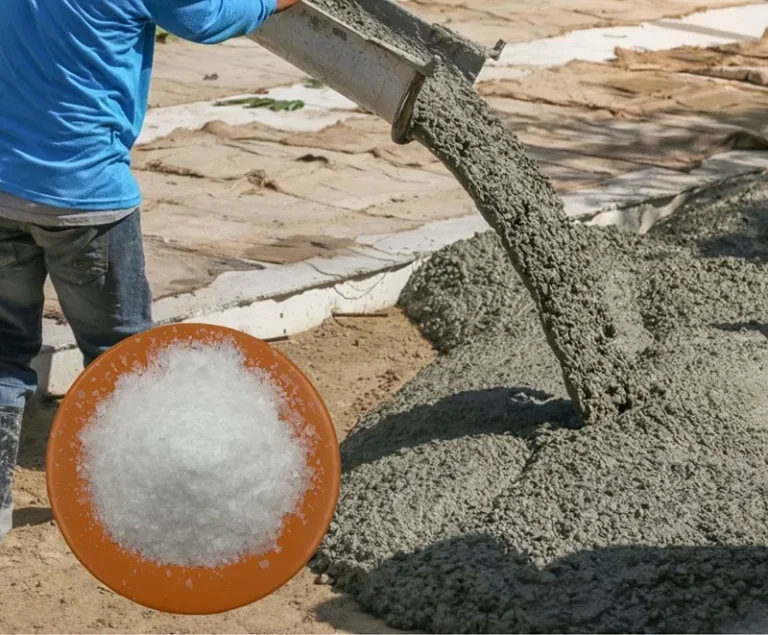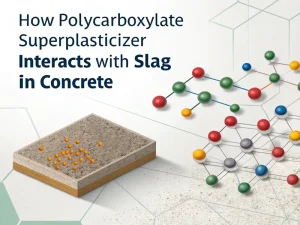Blog

Abstract: TPEG 2400 is the most critical component of concrete admixtures. Understanding its molecular structure and practical applications is crucial.
This article aims to comprehensively interpret TPEG 2400 and explore its molecular structure, essential characteristics, and valuable functions.
TPEG 2400 represents isopentenyl polyethylene glycol ether with a unique molecular structure. It comprises isopentenyl groups attached to polyethylene glycol (PEG) chains. The PEG chain is composed of repeated ethylene oxide units. The length of the PEG chain corresponds to a molecular weight of approximately 2400, endowing the compound with specific properties.
Isopentenyl groups act as reaction sites, enabling TPEG 2400 to participate in polymerization reactions. Hydrophilic PEG chains enable TPEG 2400 to have good solubility in aqueous solutions, which is crucial for its application in water-based systems such as concrete admixtures.
The synthesis of TPEG 2400 typically involves the reaction of isoprenol with epoxyethane under specific reaction conditions. This process requires precise control of temperature, pressure, and the presence of a catalyst. Advanced manufacturing technology ensures the production of TPEG 2400 with high purity and consistent quality.
Manufacturers optimize reaction parameters to achieve the desired molecular weight and chemical structure. Quality control measures have been implemented at every stage of the production process to detect and eliminate any impurities or by-products that may affect the performance of TPEG 2400.
The most widely used application of TPEG 2400 is currently in the production of polycarboxylate superplasticizers. TPEG 2400 is a key monomer in polymerization reactions. It copolymerizes with other monomers, such as acrylic acid or methacrylic acid.
The PEG side chain of TPEG 2400 provides steric hindrance in the resulting polycarboxylate superplasticizer molecules. This spatial hindrance effect is the reason for the good dispersion of cement particles in concrete. When added to concrete mixtures, polycarboxylate superplasticizers containing TPEG 2400 can significantly reduce water content while maintaining or even improving the workability of concrete. This has produced high-strength and durable concrete widely used in high-rise buildings, bridges, and other infrastructure projects.
In addition to its dominant role in concrete engineering, TPEG 2400 has also shown promise in other fields. In the field of polymer coatings, it can be used to modify the performance of coatings to improve their adhesion, flexibility, and water resistance.
TPEG 2400 can also synthesize certain types of adhesives to enhance their strength and performance. In addition, in the textile industry, it may be used for fabric finishing to endow fabrics with hydrophilicity and anti-static properties.
The polycarboxylate superplasticizer based on TPEG 2400 enhances concrete’s flowability and self-leveling performance. This is particularly useful in complex template designs, where concrete needs to fill every corner and cavity without excessive vibration.
For example, when constructing prefabricated concrete components with complex shapes, the enhanced processability provided by TPEG 2400 helps ensure a smooth and uniform pouring process.
Using TPEG 2400 in concrete admixtures can help improve the durability of concrete structures. The reduction in water-cement ratio achieved through superplasticizers results in a denser concrete matrix that is more resistant to entering harmful substances such as chloride and sulfate ions.
This is crucial for structures exposed to marine environments or industrial areas subject to chemical erosion.
TPEG 2400 plays a crucial role in the production of high-strength concrete. By optimizing the dispersibility of cement particles and reducing the moisture content, the compressive strength of concrete can be significantly improved.
This allows for the construction of slimmer and taller structures, reducing the amount of concrete and steel required, ultimately achieving more cost-effective and sustainable building designs.
TPEG 2400 has had a significant impact in the field of concrete additives due to its unique molecular structure. It has shown potential for expansion into other industries. Its role in synthesizing polycarboxylate superplasticizer and its subsequent application in concrete engineering has completely changed how we produce and use concrete.
As research and development continue, we may discover more applications and optimize the use of TPEG 2400, further improving the performance and sustainability of various materials and construction projects.

How Polycarboxylate Polyether Monomer Affect Concrete Performance
Blog How Polycarboxylate

How Polycarboxylate Superplasticizer Interacts With Slag In Concrete
Blog How Polycarboxylate